Wiccan Holidays – Samhain
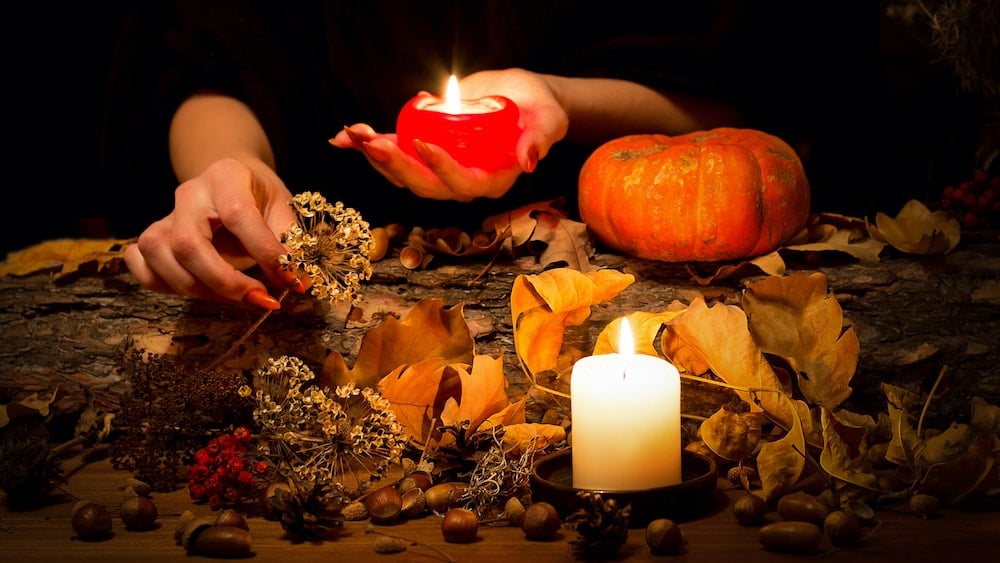
By Louise Clover / October 19th, 2020
Updated: October 11th, 2021
Estimated Read Time: 12 Minutes
With leaves turning colors and days growing shorter, plenty of people turn their sights to the next holiday to get them through. Which was how people began to latch onto Samhain. Is there more to this holiday than pumpkin carving and wearing costumes? You’ll be surprised to find out.
What is Samhain?
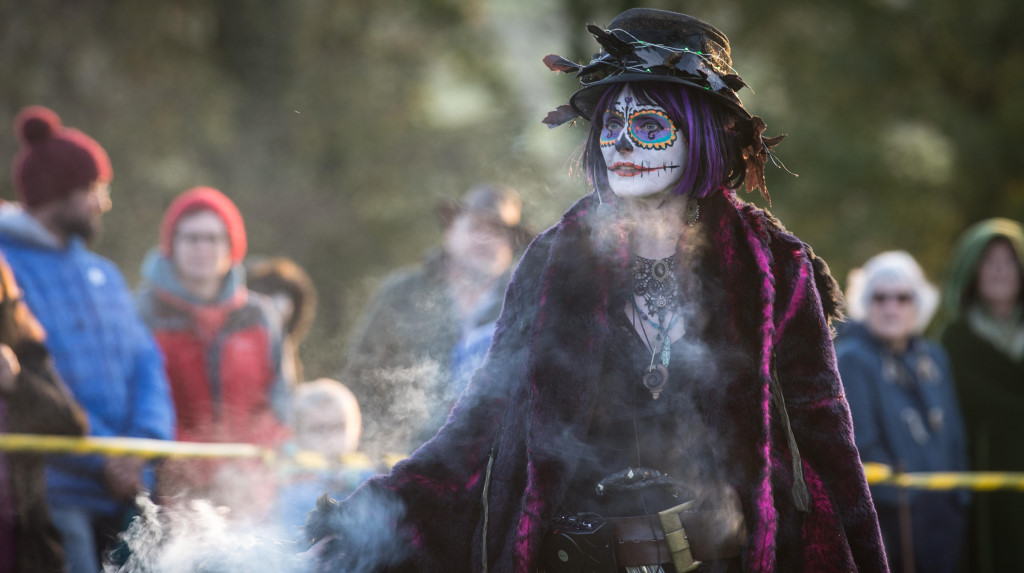
Samhain (pronounced ‘sow-win’) originated with the ancient Celtics and is celebrated on October 31st to November 1st. This is when they believed it was the mid-point between the Fall equinox and Winter solstice. For these ancient Celts, the year splits in two. Samhain marks the beginning of the ‘dark half of the year’, otherwise known as the New Year.
This the part of the year when they reap what the Goddess and the Horned God had sowed during the Beltane celebrations. It’s part of their tradition to have the hearth at home going all day while they gathered their crops.
History of Samhain
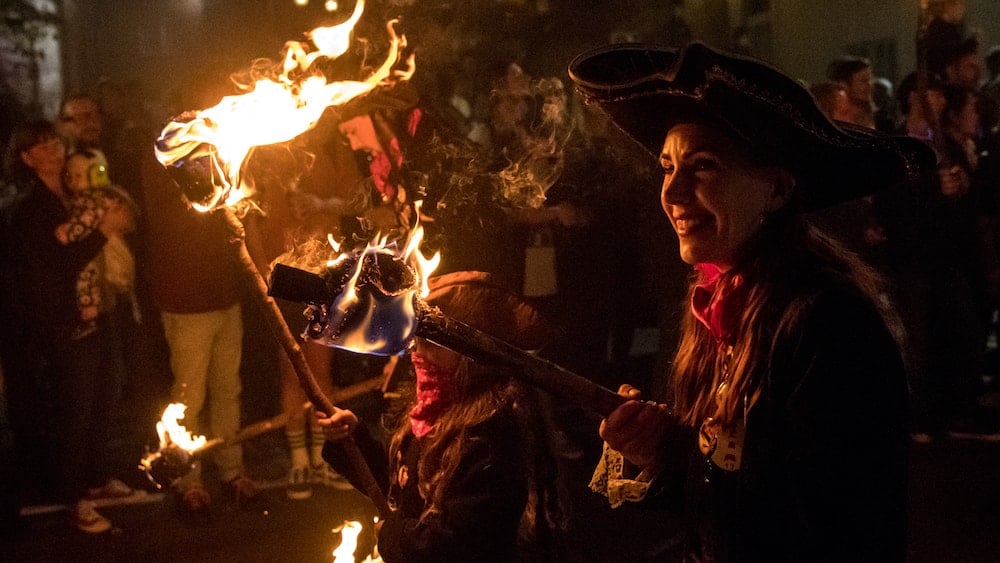
At sundown everyone would join the druids for a community bonfire. There was a wheel used to create the fire. The wheel represented the Sun. Cattle are usually sacrificed during this ceremony. Participants would light a flame from the communal fire and use it to light the hearth at home. The fire signifies the continuity and importance of community in a village.
According to ancient texts Samhain celebrations lasted over the course of three days. The ‘head’ of each household presented themselves to the Head Clansmen or King of the providence. It was ill-fated not to partake in these ceremonies. Villagers believed that you would be a harbinger of misfortune to them or the town.
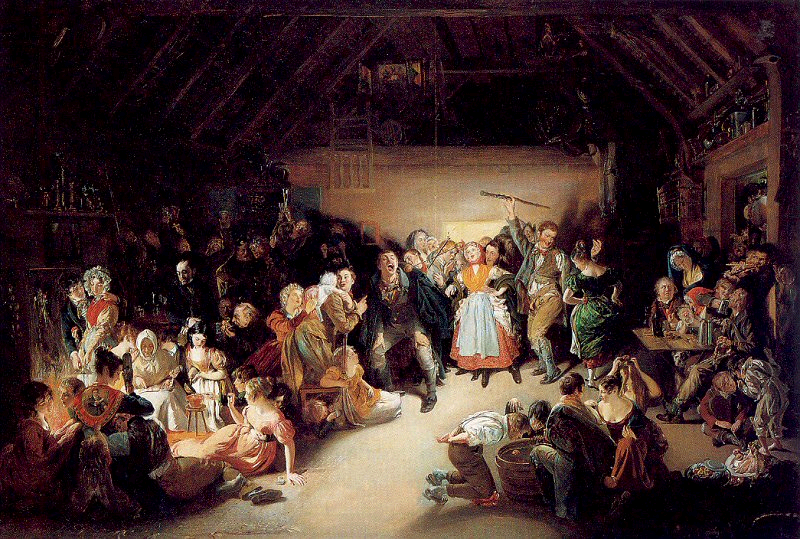
The holiday is so sacred that written in these same texts, no man may raise their arms until it’s over. Going against this rule meant certain death (once Samhain is over, of course).
There were also documents of excessive drinking and merriment during this festival. Many details of the preparations of this holiday have vanished. Many of Samhain’s traditions have gotten absorbed by organized religions. Witch trials and religious conversion across Europe were responsible for the destruction of these memoirs.
Our free Wicca 101 course provides the essential knowledge and skills
you need to start confidently practicing Wicca.
Join the Wicca Academy community today!
Samhain Monsters
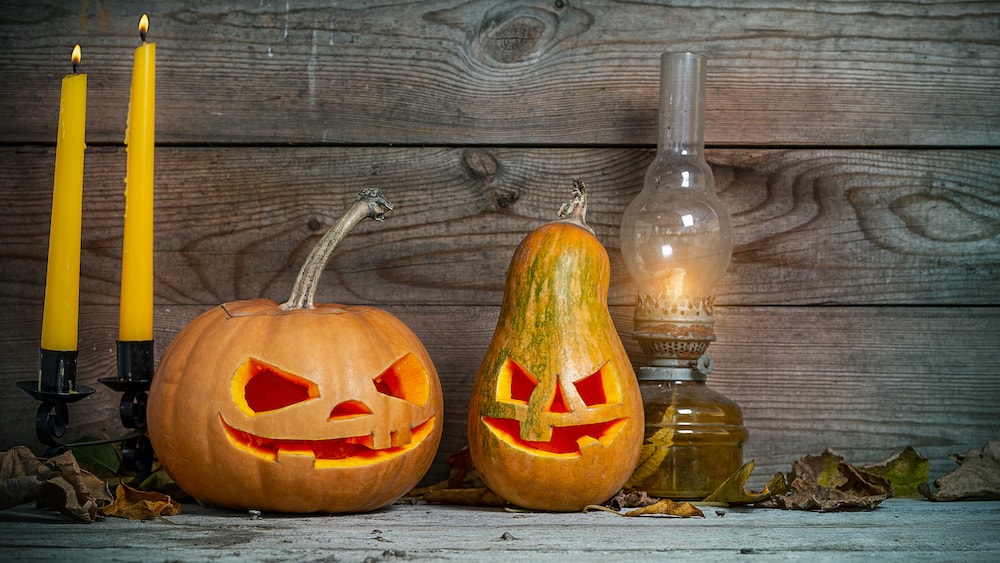
Oh did you think the creatures and scary monsters of Halloween were just a way of selling costumes?
There are in fact plenty of ancient Samhain monsters attached to the holiday. Some of Halloween’s most iconic activities have Samhain origins. Activities such as carving Jack-o’-lanterns and dressing up in costumes.
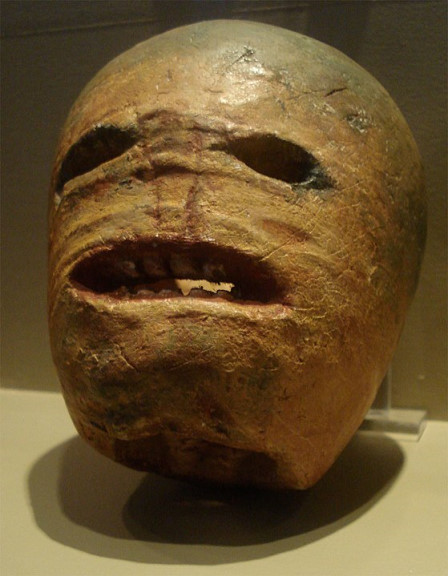
Ancient Celts would carve grotesque faces into turnips to scare off wandering spirits from entering their homes. Pumpkins became more prevalent when the Irish immigrated to America. They found that pumpkins were easier to carve than the more acquirable turnip in Ireland.
Ancient Celts would also carve masks of these horrible faces. Once the sun goes down on October 31st, they would put them on. This is to prevent any restless wraith from stealing their souls. Or worse, possessing their bodies. If an ancestor passes away, it’s common for them to dress in animal skins. Sometimes they would don a headdress made of skulls or bones. This is to frighten off not only spirits, but also fairies that have a penchant for souls.
1. Sidhe
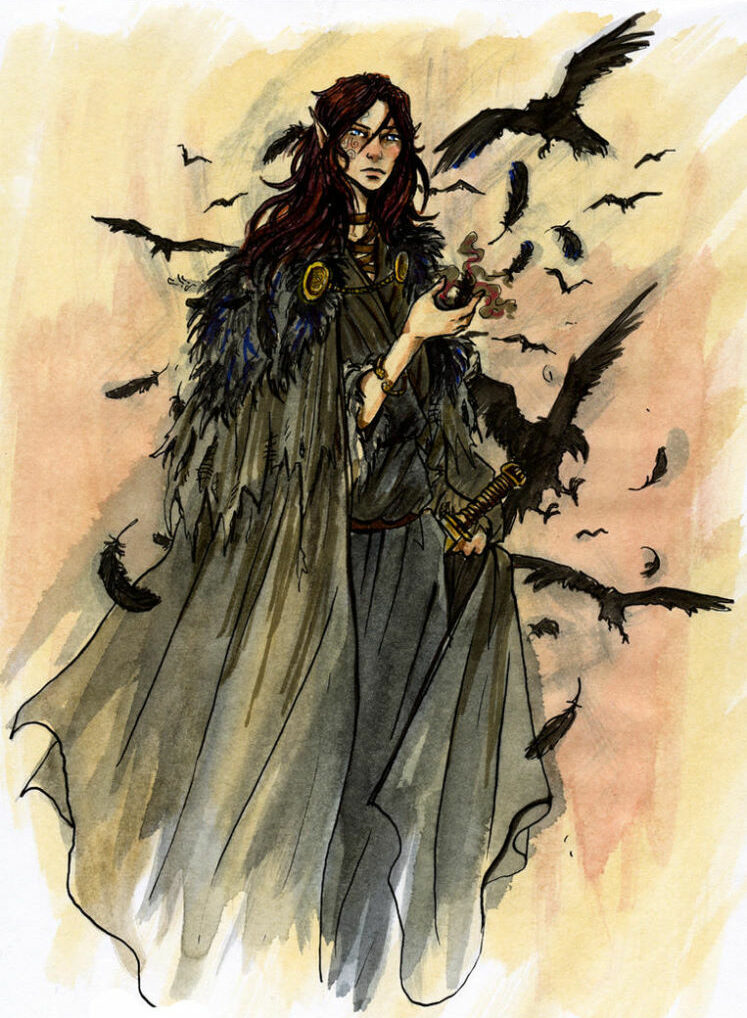
The ancient Celts weren’t only worried about restless spirits. Sidhe, otherwise known as fairies, were also a nuisance to them. While they often cause minor inconveniences around the home, they are also known to kidnap children.
Some believe that Sidhe are the male equal of a banshee or a subspecies of fairy-folk. They prefer to capture mortals after sundown and are actually the spirits of the dead.
2. Pukah
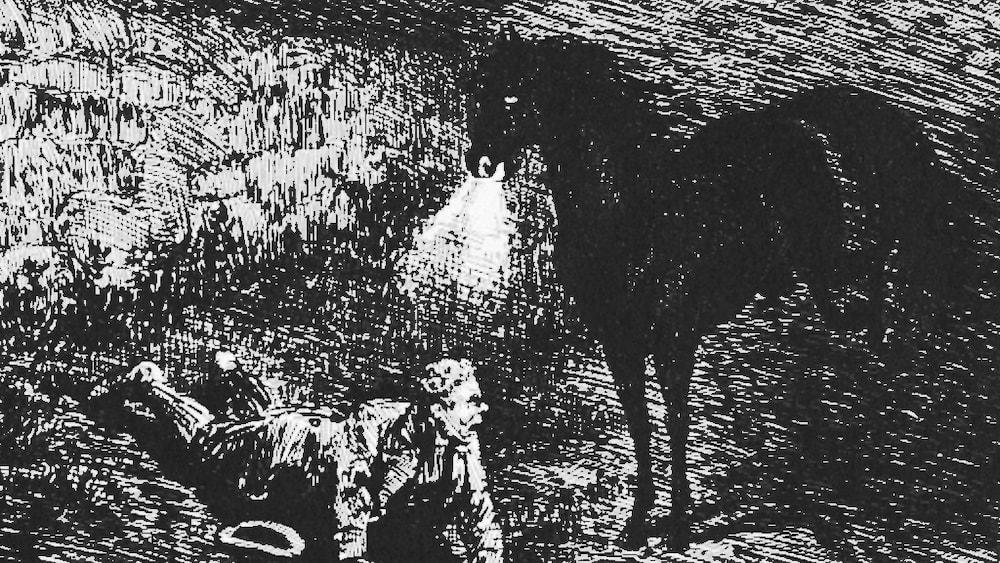
The pukah (pronounced ‘poo-ka’), also known as pooka or puca, is a shapeshifter. It most often appears in the form of a horse with bright golden eyes. There have been some instances in which it’s transformed into goats, rabbits and even an old man. Some would describe this old man as a goblin rather than a grandfatherly figure. The pukah has an eerie ability to mimic human speech. Although there haven’t been any recorded instances of them doing actual harm to a human.
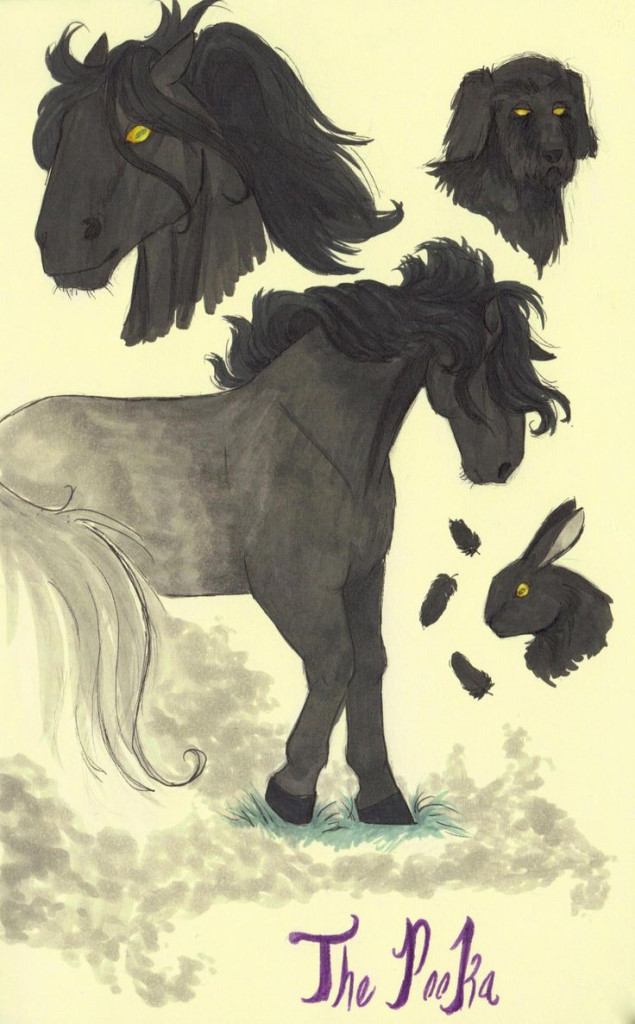
They’re feared simply for creating havoc and mischief by luring people in circles. Time works in a different manner, making them appear to be ‘missing’ for days. These people return dazed and confused. Often a few miles away from the original place of abduction. While not friendly to other people, pukahs tend to show kindness towards farmers.
Pukahs prefer mountainous and wide open fields since they favor their horse form. Along these mountainous trails are small pools of water. They’re called ‘pukah pools’ as a nod to this legendary creature.
3. Dullahan
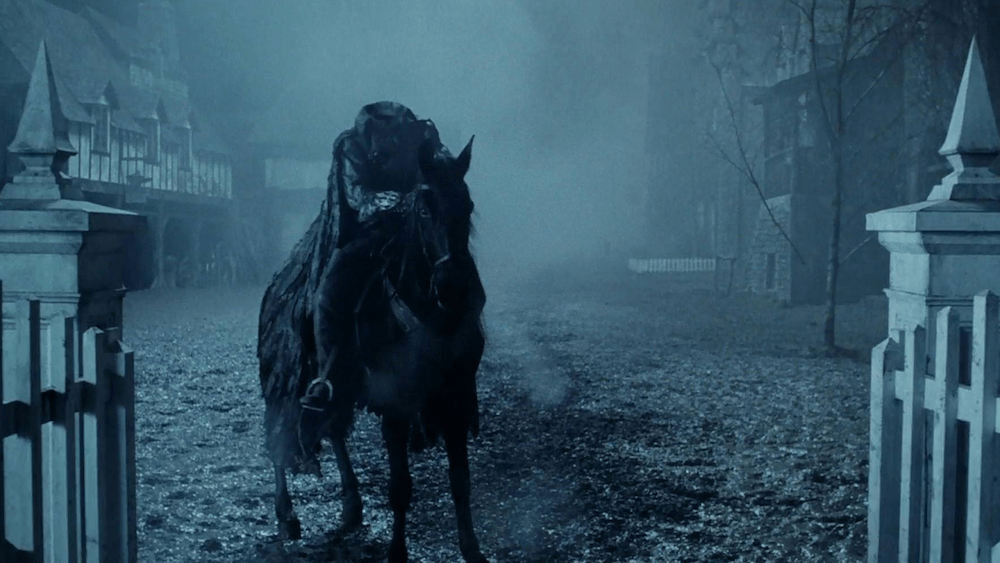
You might not recognize the Dullahan now, but you may have heard about the “The Headless Horseman”. Where the banshee often warns of someone’s death, the Dullahan is a certain harbinger of death. According to superstition the Dullahan rides on a black stallion. It’s said whenever he comes to a stop, a mortal person dies. According to ancient Irish mythology, the Dullahan is an incarnation of the ancient Celtic God, Chrom Dubh. This legend features a blood-lustful king named Tigernmas. He worshipped Chrom and would sacrifice humans often through decapitation in Chrom’s name.
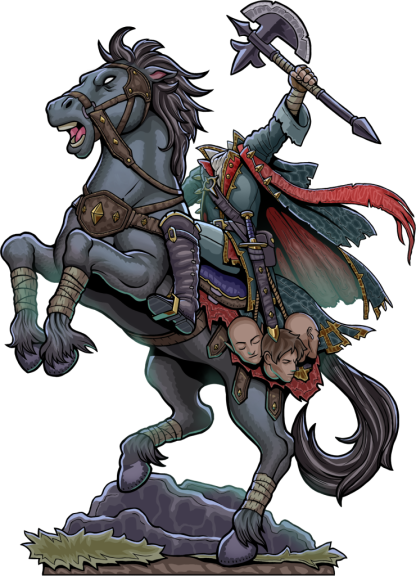
When Christianity came around it was obvious this worship became outlawed. Chrom not pleased with this vowed to not be forgotten so easily. He took on the form of the Dullahan and the biggest fear is that he will stop by you on his steed and call out your name. That’s when you’re said to know you are no longer among the living.
Don’t miss out!
We have a special offer for you after you create your free account
Samhain Across The Ages
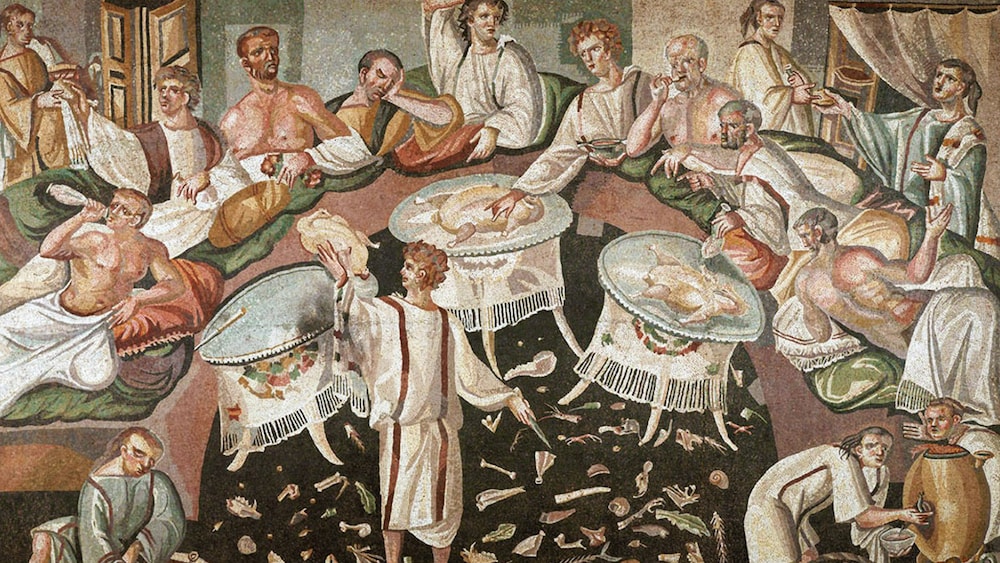
When the Romans conquered the Celts in 43 AD they had certain ideas of how they would observe Samhain. They split it over two holidays known as Feralia and Lemuria.
Lemuria festivities go across three days in May (the 9th, 11th and 13th to be exact). It’s the Roman equal of the festival of the dead. During Lemuria they paid their respects to spirits (otherwise known as ‘lemurs’) that suffered violent and/or unjust deaths. Feralia honors one’s own ancestors and is celebrated on February 21st.
When Christianity became more prevalent, Pope Boniface IV reconsecrated the Roman Pantheon. This very same temple was once a temple dedicated to all the Roman gods. Now it is a commemoration to all the Christian martyrs and saints. Pope Boniface IV also rededicated May 13th to the feast day of all Martyrs.
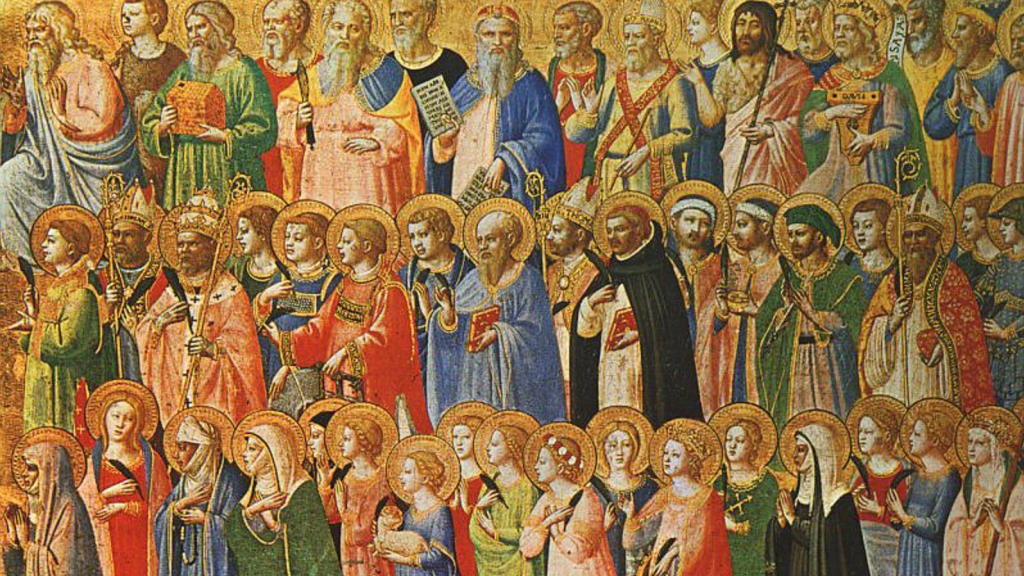
Pope Gregory IV was responsible for the disappearance of Samhain and Feralia. He declared November 1st as All Saints Day to honor Christian saints and November 2nd as All Souls’ Day. Interestingly enough, both of these celebrations incorporate plenty of traditional Samhain observations.
When Wicca came around in the 1950s, it became more prevalent to celebrate Samhain once more. In the Northern Hemisphere, Samhain is throughout October 31st to November 1st. Meanwhile there are those that prefer to wait for the next full moon. This is to make use of the powers of the moonlight to charge their intentions and spells.
Love this article? Share the magick with your friends and loved ones!
Thinning of the Veil
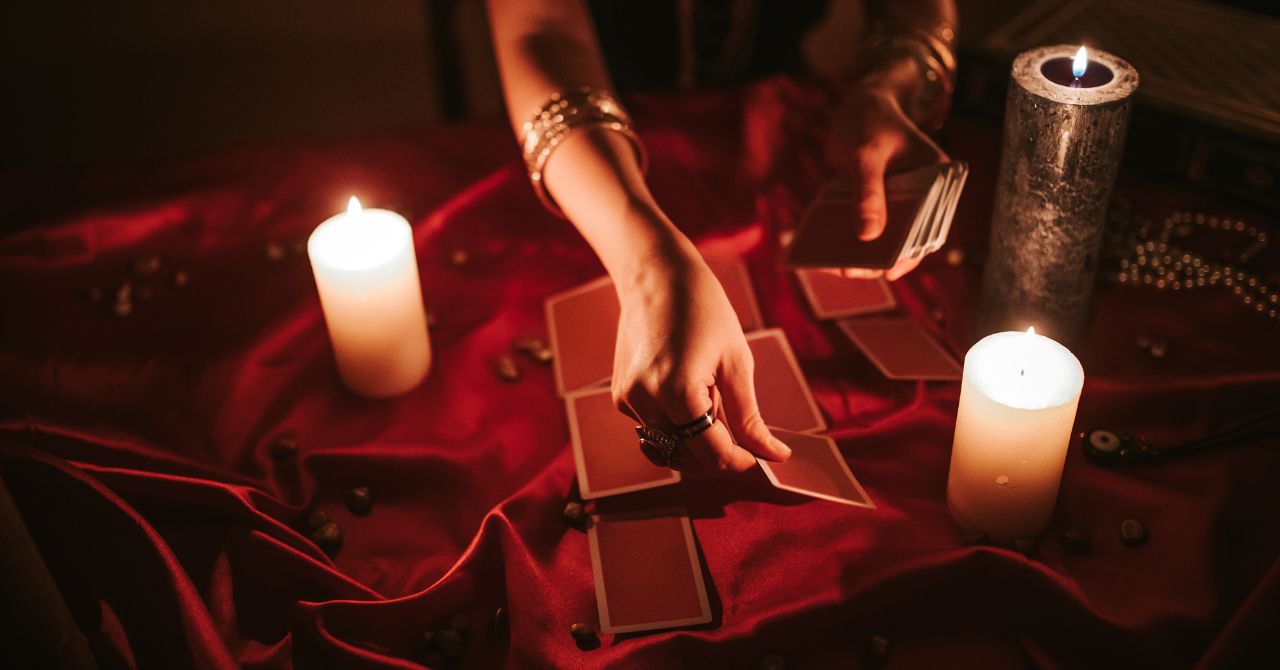
One of the most profound elements of Samhain lies in the belief that during this time, the veil between the physical world and the spiritual realm becomes exceptionally thin. This concept resonates deeply with those who practice Wicca and even catches the curiosity of those unfamiliar with the tradition.
The “veil” in question isn’t a tangible entity. Instead, it’s an ethereal barrier that separates the living from the departed, the known from the unknown, the seen from the unseen. On most days, this boundary is firm, allowing limited interaction between the worlds. But come Samhain, it becomes permeable, allowing energies to pass through more freely.
Why is this significant? The thinning of the veil provides a unique opportunity for practitioners and the curious alike. It’s a time when communication with ancestral spirits becomes easier, and divination practices, such as tarot reading or rune casting, often yield clearer insights. For many, it’s a chance to honor, remember, and even connect with loved ones who have passed on.
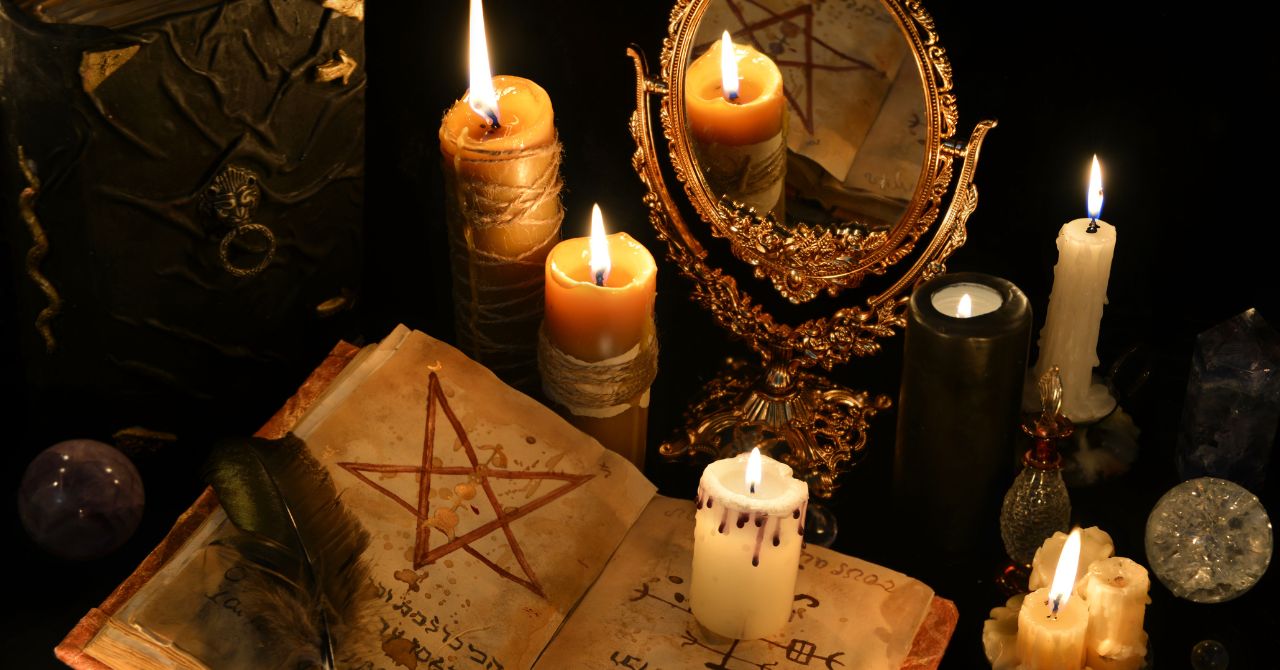
In historical contexts, this bridging of worlds aligns with many of the practices and beliefs associated with Samhain. From ancient Celts who believed spirits roamed the earth during this time, to the Romans who paid their respects to unjustly departed souls during Lemuria, the idea of heightened spiritual activity has always been intertwined with this period.
For modern Wiccans and those drawn to the craft, recognizing and respecting the thinning of the veil can be both a deeply personal and communal experience. Whether it’s setting an extra plate at dinner for a deceased loved one, lighting a candle in their memory, or simply taking a moment to reflect on the cyclical nature of life and death, Samhain offers a sacred space to engage with the more intangible aspects of existence.
For those new to the concept, it’s worth noting that while the thin veil can be a source of powerful spiritual experiences, it’s always essential to approach any interactions with respect, intent, and a degree of caution. After all, with greater accessibility to the spiritual realm comes increased responsibility.
Ways to Celebrate Samhain
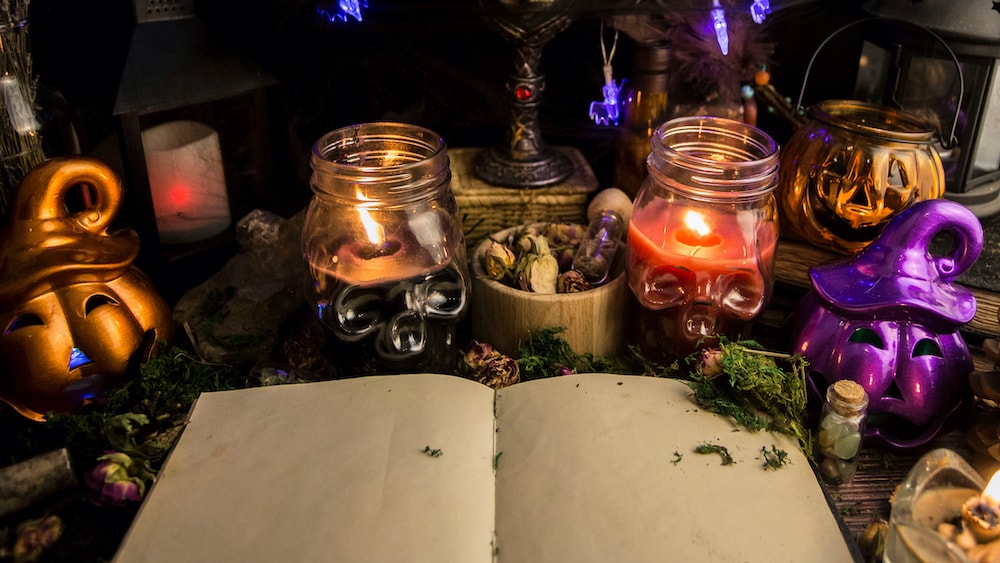
While there are portions of Samhain that are woven with monsters, the festival is still a serious one. It focuses mainly on spirituality. There are many ways modern Wiccans can celebrate Samhain.
1. Dinner with Harvest Foods or a “Silent Supper”
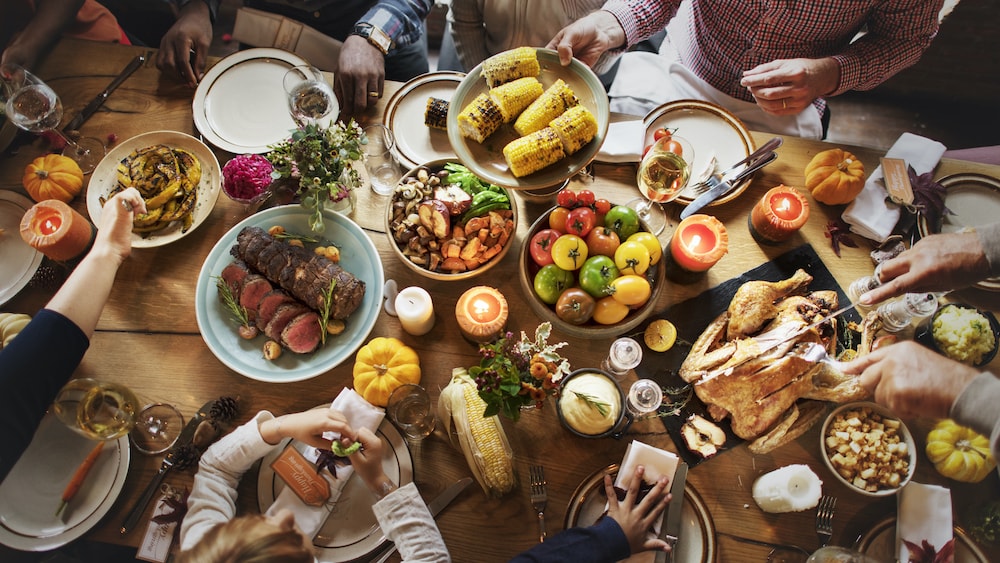
Samhain celebrations means it’s the official end of summer. A simple way to celebrate is to have a dinner affair with oneself or close family members. Here are some Samhain foods that would be great additions to your meal:
- Wild game
- Nuts and seeds
- Harvest fruits – apples, cranberries, pomegranates
- Bread – especially pumpernickel or rye
- Fall herbs – sage, rosemary, garlic, cinnamon, nutmeg, allspice
- Harvest vegetables – pumpkins, squash, potatoes, parsnips, etc.
A “silent supper” is when an extra place setting is set for all the ancestors and family members that have passed on. Once everyone has dinner on their plate, they eat in silence. It’s a way to contemplate and think upon their blessings from the harvest. It’s also a time to reminisce on those family members that are no longer there. There might be a slight connection to the spirit world if you are sensitive to their presence.
Related: Samhain Recipes and Foods
2. Samhain Nature Walks
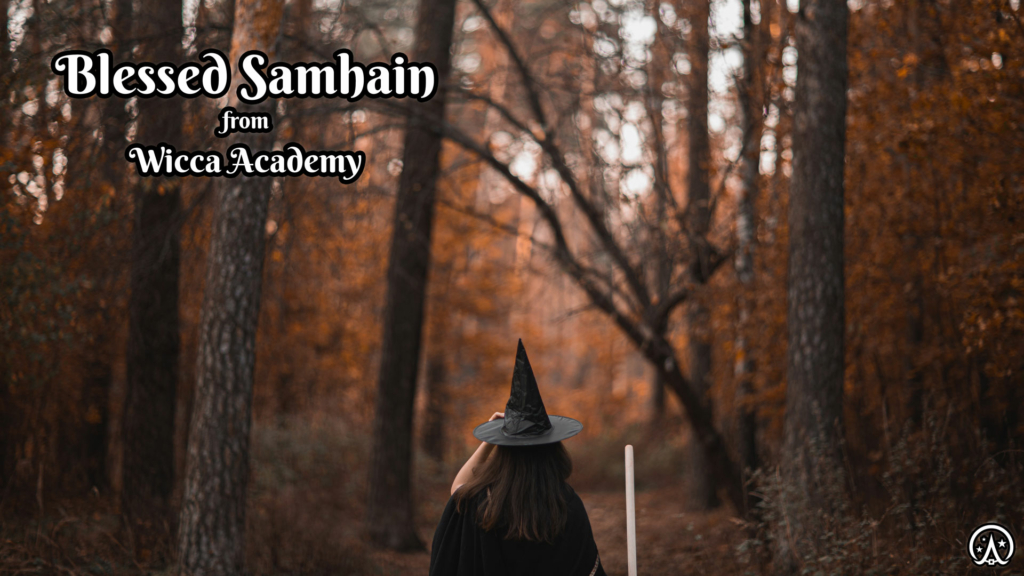
Samhain is a time of reflection, watching the end of a season while death lingers in the air. Take a walk through the forest or a local park. Feel the energy around you. Take note of the receding trees, the color of changing leaves. If you live in a place with more temperamental weather, then reflect on Nature itself. Observe the creatures and their habits as they prepare for what’s to come.
3. Setting up a Samhain Altar and Ancestor Altar
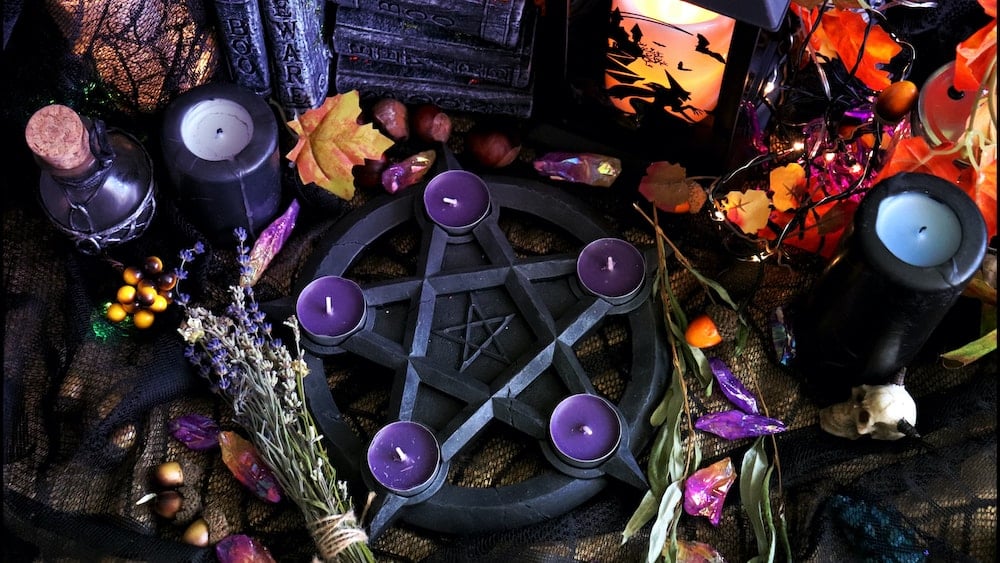
Choose a low traffic spot, clean the area, then sage it to create clarity and balance the energies. There are several colors that you can use as an altar cover: deep plums, purples, or burgundy. If you feel like it, don’t shy away from fall colors like oranges, reds, and golds to create a brighter altar. Darker cloths are a visual representation of the shorter days to come.
To add a physical representation of Samhain symbols to the altar, you could add harvest nuts and fruits. For example a cornucopia filled with pumpkins, squash, acorns, and other types of nuts.
Do you happen to have a small scythe laying around home? If so this would be a great addition to your altar. Especially since Samhain is also a festival that observes death and ‘new beginnings’.
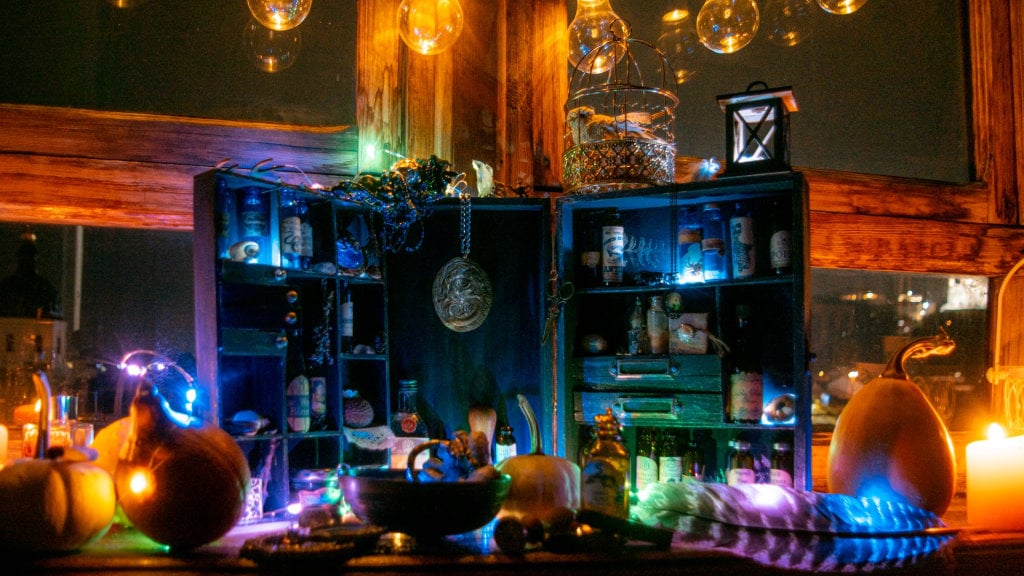
Some choose to place a goblet of mulled wine out or even add Samhain herbs such as sage, rosemary, and catnip. You might want to avoid this if you’re a cat owner, otherwise you might find yourself with a destroyed altar.
During Samhain, the deities are often associated with agriculture and death. The Greek Goddess Demeter and the Assyrian God Adonis are great representations of the Moon Goddess and the Horned God during Samhain.
To increase your focus and deepen your concentration for meditation, add a smoky quartz or hematite crystal to your altar.
Related: Samhain Altar Ideas
Ancestor Altar
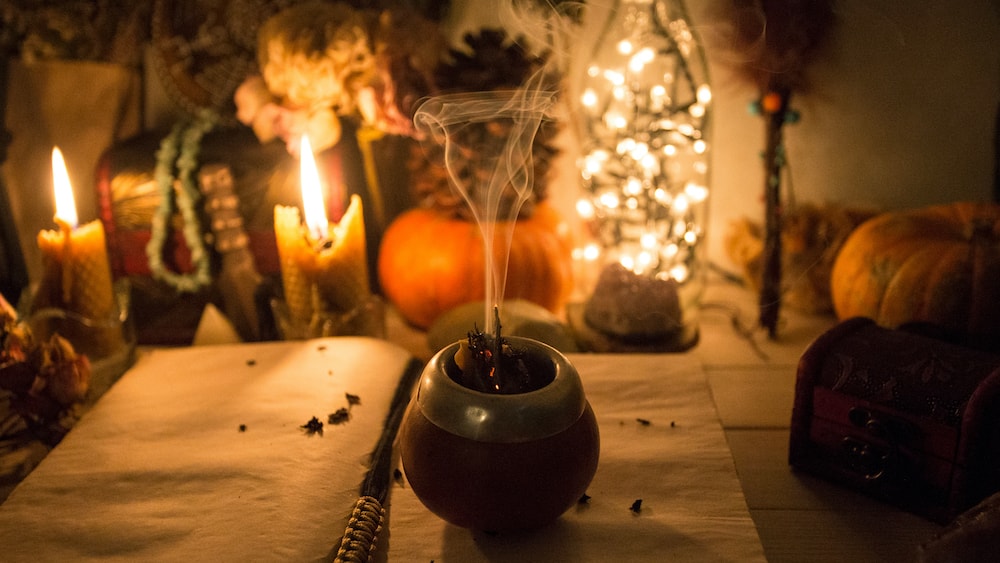
An ancestor altar is not that much different than having a regular altar. The difference is that it’s filled with items that connect you with your roots and ancestors. For the cloth you could use a quilt that a grandmother knitted. Another idea is a piece of clothing that belonged to a beloved family member.
Your altar could include framed photos of your departed loved ones. Take it another step further by adding photos of a place your family frequented together or a map of where your ancestors were from.
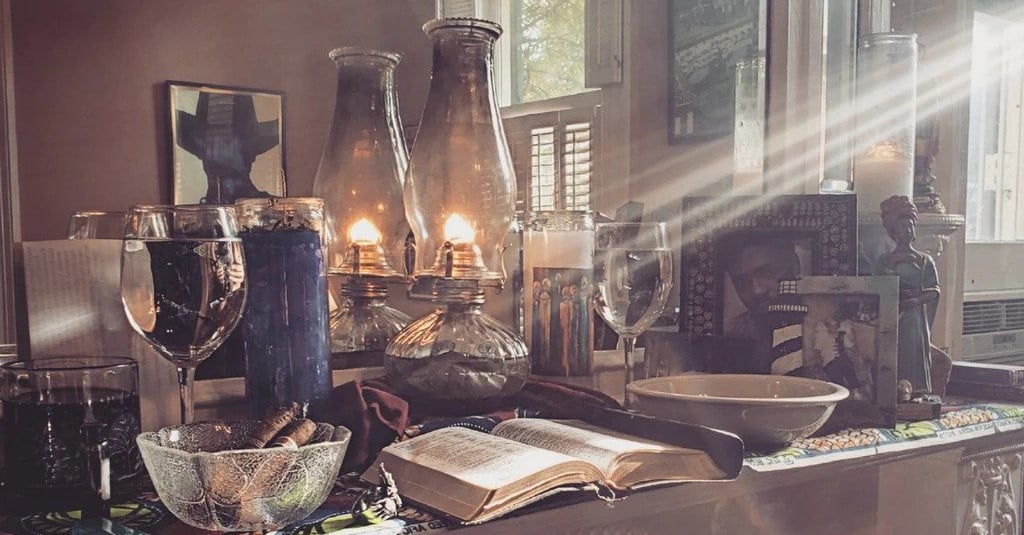
Physical mementos of your loved ones, if you have them, are another great way of personalizing your ancestor altar. If your family is the type to express their love through hearty meals, then dig for an old family recipe and cook it for dinner. Bonus points if the dish contains Samhain herbs! Other offerings that you can include are small cups of coffee or rum.
It’s also advised to have your patron deities represented on the altar to help ‘watch over’ your ancestors.
4. Commune with the Dead
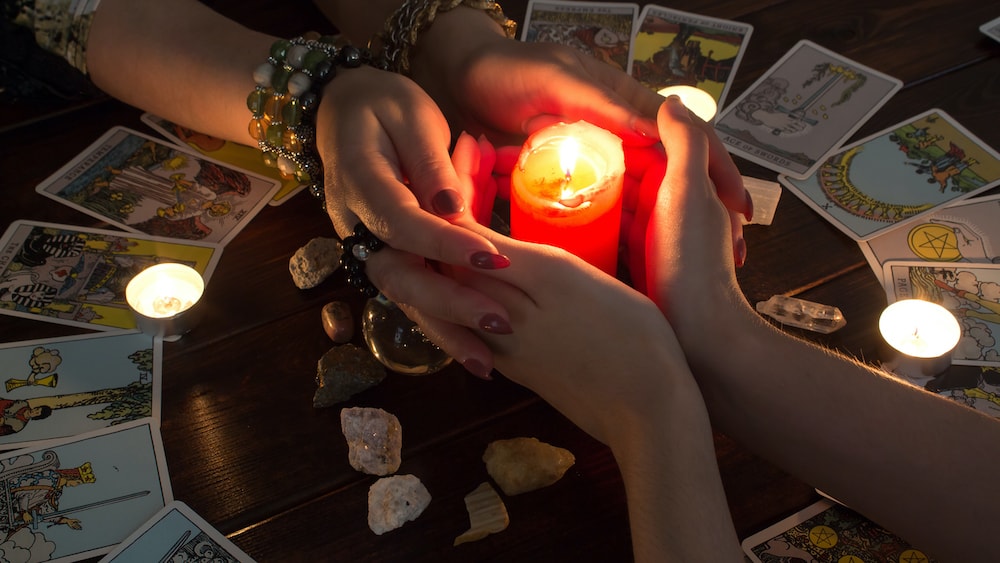
Samhain observes the passing of another year and life in a respectful manner. It isn’t too far out of the realm of possibilities to open oneself up to commune with the dead.
There are several ways to do this but please be aware that this isn’t an activity to mess with. The utter seriousness of the situation must be in consideration. Opening one’s energy to spirits is a very dangerous task. Only attempt it when you feel comfortable enough with your own strengths and powers.
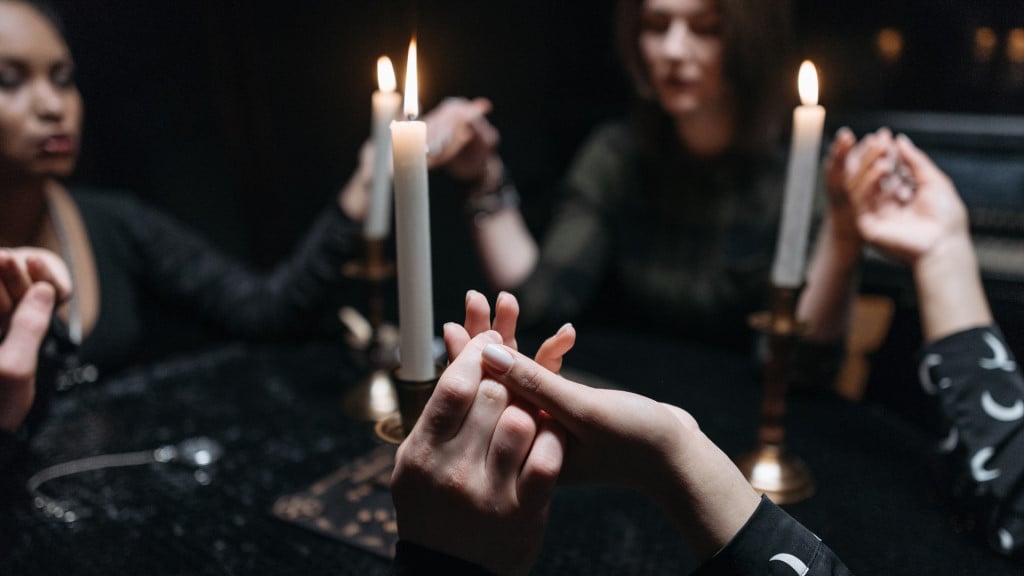
The simplest way of communicating with the dead is to host a seance. You’d preferably do this with a select group of people you know and have similar beliefs. Before you begin, it’s best to remind your guests to not antagonize or disrespect the spirit in any manner.
Starting with your hands held in a rough circle, the “leader” would begin to ask questions. The spirit might make itself known through several methods. This includes talking through a member of the circle and automatic writing.
It’s easier to communicate with the spirit if you’re familiar with using Ouija boards, tarot cards, or pendulums.
Ouija Boards
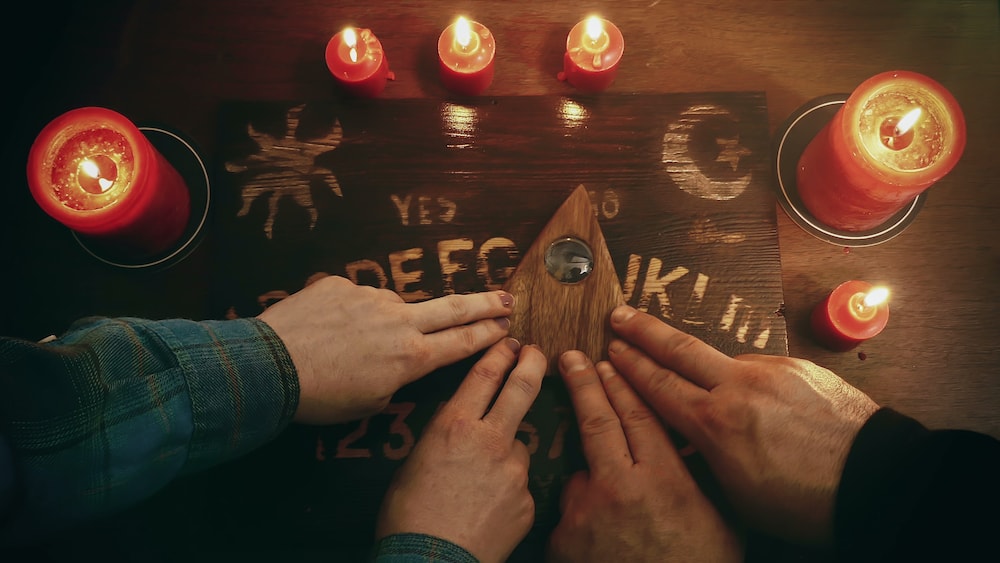
The most common method of contacting spirits is using an Ouija board. There are plenty of rules attached to using one and it’s more than just a toy sold by Hasbro. Only those who are comfortable with handling spirits should use Ouija boards. You should never use an Ouija board alone.
If you accidentally call on a negative spirit during your seance or Ouija board session, the first thing to remember is to keep calm. Next, immediately end the session. To do this start by saying goodbye to the spirit. If the spirit refuses to move on, a prayer or a blessing is sometimes needed to help them along.
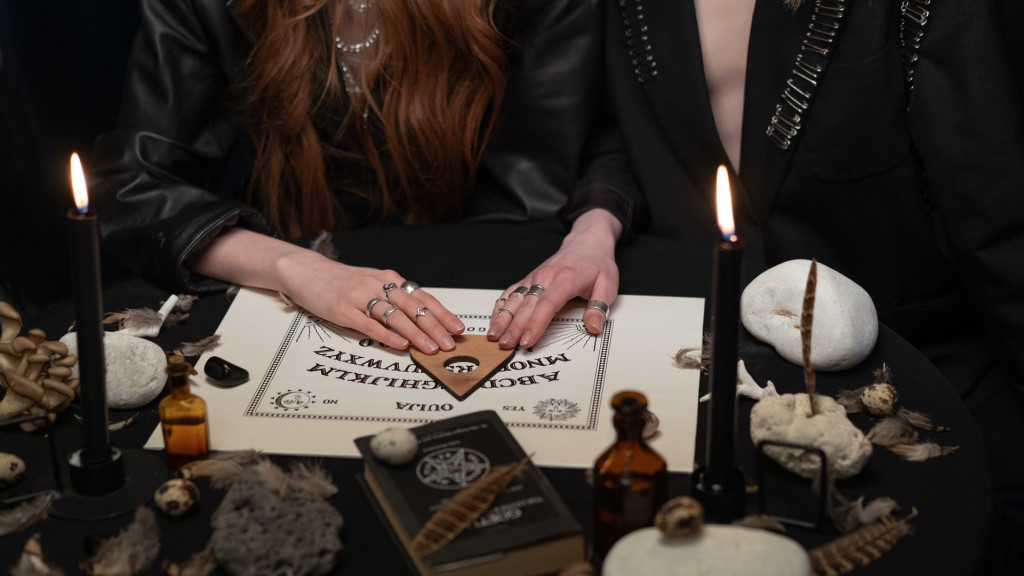
The best place to store your divination tools when they’re not in use is on your Samhain altar. When you’re finished with your seance or Ouija board session be sure to cleanse and sage the area. This is to get rid of any lingering spirits out of your place.
Spirits are curious by nature. Don’t be alarmed if they decide to make a reappearance in your dreams later that night or in the coming week.
5. Bonfire Magick

The bonfire is the most ancient Samhain tradition that exists to this day. You can perform bonfire magick in or around the comfort of your home. Here are a couple of easy spells to try:
- Start by having a fire in a small cauldron outside or in a designated fire place (indoor fireplaces count too!)
- On a piece of paper write a habit you wish to break or a lingering anxiety you wish to let go
- Fold the paper and hold it to your chest. Focus on new beginnings and a lighter future without the burden of what you just wrote.
- Throw the paper into the fire
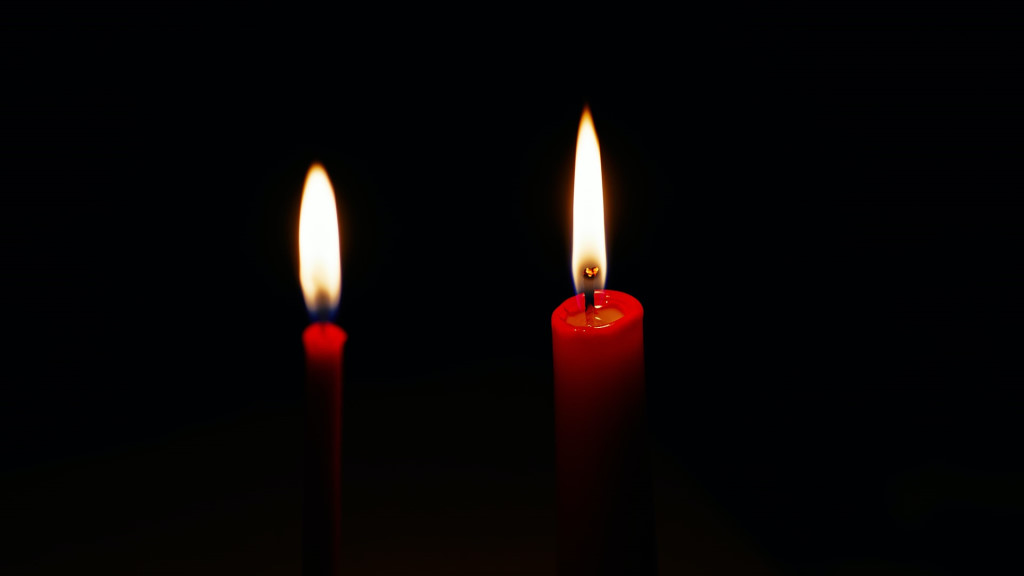
If you don’t have the space for a bonfire you can partake in fire magick with two candles. Preferably one black and one orange to represent Samhain. You could also use standard white candles if you don’t have any orange and black ones on hand.
- Light the two candles and focus on your past
- Reflect on the choices you’ve made to make you the person you are today and the choices you will make in the future
It’s a great way to set your intent. In fact there are many similarities to a ‘New Year’s Resolutions’ made on January 1st.
Related: The Colors of Samhain
Conclusion
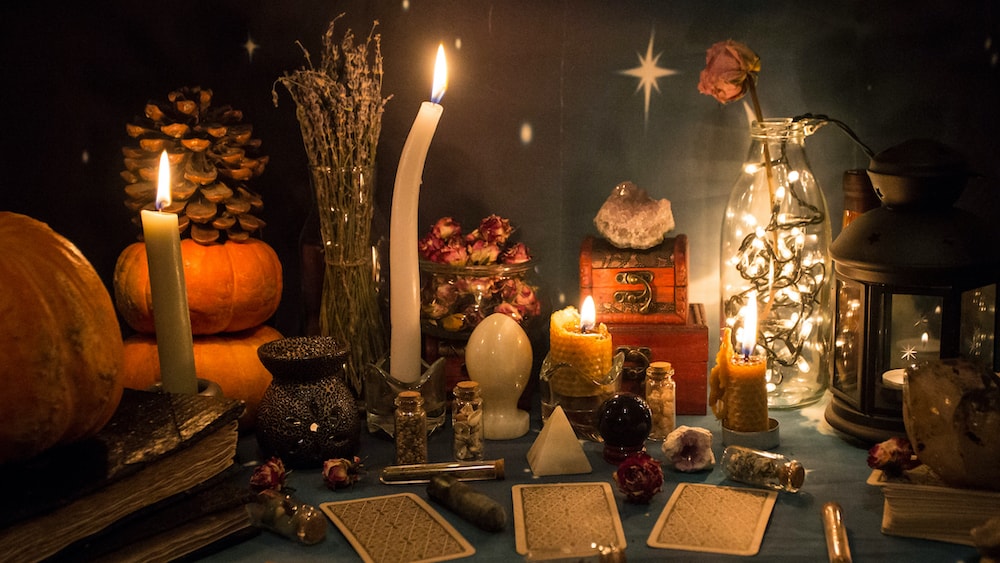
I hope this article managed to provide some insight into the celebration of Samhain. With October 31st around the corner, I hope you’ll be better prepared to observe this tradition this year. Together with everyone here at Wicca Academy we wish you a blessed Samhain! To learn more about Wiccan Holidays check out our video course. Sign up for free to get started at Wicca Academy today!
Check out our other articles:
Sigils for Newcomers
Jar Spells Made Simple
Get to Know Your Familiar
Kitchen Magick for Beginners
Moon Phases and Simple Rituals
See All Articles
Love this article? Share the magick with your friends and loved ones!
Very interesting reading. Much of this is knowledge I have read before, but it was nice to reread it & to also learn more interesting things! Thank you.
very intresting and mazing too